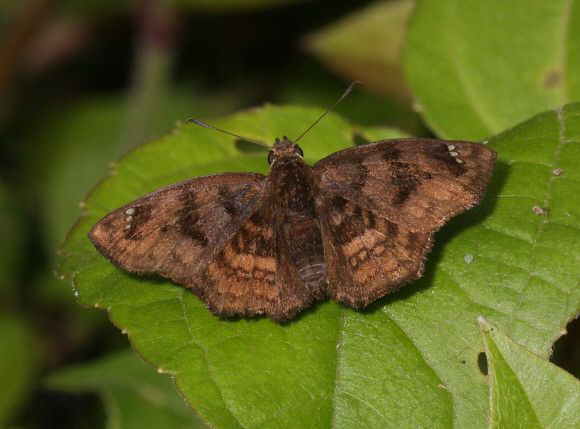
Introduction
The Pyrginae, popularly known as Flats or Spreadwings, are a cosmopolitan subfamily distributed across temperate and tropical habitats throughout the world. In the Americas there are 990 species, of which about 580 are assigned to the tribe Pyrgini.
The suffused but distinct markings, and the 3 whitish spots near the acute apex clearly identify the illustrated butterfly as a member of the genus Nisoniades. There are 33 species in the genus, most of which are very similar in appearance, although the marbling on the hindwings of macarius is unusual in this genus. It should be noted that there is another neotropical genus with an almost identical name – Niconiades ( Hesperiinae ).
Nisoniades macarius is distributed from Guatemala to Argentina.
Habitats
This species is found in tropical and subtropical forest at altitudes between about 200-1000m.
Lifecycle
I have no information regarding Nisoniades, but Pyrgine butterflies typically lay their eggs singly on either the upperside or underside of leaves. The larvae are usually dull green or brownish, with thin longitudinal lines along the back and sides, and with black shiny heads. Most feed on low growing herbaceous plants, but a small percentage feed on the leaves of bushes or trees. The pupae are usually dark and smooth, with the wing cases in a contrasting tone or colour. They are normally formed within silken tents formed by spinning together the leaves of the foodplant.
Adult behaviour
This, and other Nisoniades species, are generally encountered as solitary males.
